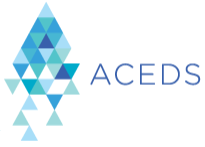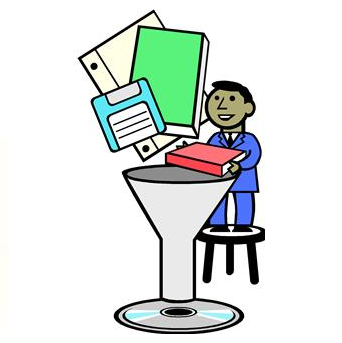This is the eighth and final of the 2016 LegalTech New York (LTNY) Thought Leader Interview series. eDiscovery Daily interviewed several thought leaders at LTNY this year to get their observations regarding trends at the show and generally within the eDiscovery industry. Unlike previous years, some of the questions posed to each thought leader were tailored to their position in the industry, so we have dispensed with the standard questions we normally ask all thought leaders.
Today’s thought leader is Ralph Losey. Ralph is an attorney in private practice with the law firm of Jackson Lewis, LLP, where he is a Shareholder and the firm’s National e-Discovery Counsel. Ralph is also a prolific author of eDiscovery books and articles, the principal author and publisher of the popular e-Discovery Team® Blog, founder and owner of an online training program, e-Discovery Team Training, with attorney and technical students all over the world, founder of the new Electronic Discovery Best Practices (EDBP) lawyer-centric work flow model. Ralph is also the publisher of LegalSearchScience.com and PreSuit.com on predictive coding methods and applications.
What are your general observations about LTNY this year and about eDiscovery trends in general?
{Interviewed the second day of LTNY}
I have not been on the vendor floor yet, but I hope to get there. I have been in several meetings and I was able to attend the keynote on cybersecurity today by Eric O’Neill, who was a terrific speaker. They started out by showing the movie that was made of the big event in his life where they caught the biggest spy America has ever had. He talked about that incident and cybersecurity and it was very good. Of course, cybersecurity is something that I’m very interested in, but not so much as an expert in the field, but just as an observer. My interest in cybersecurity is only as it relates to eDiscovery. O’Neill was talking about the big picture of catching spies and industrial espionage and the Chinese stealing American secrets. It was very good and the auditorium was filled.
Otherwise, the show seems quite alive and vibrant, with orange people and Star Wars characters here and there as a couple of examples of what the providers were doing to get attention here at the show. I have been live “tweeting” during the show. Of course, I’ve seen old friends pretty much everywhere I walk and everybody is here as usual. LTNY remains the premier event.
One trend that I’ll comment on is the new rules. I didn’t think the rules would make that much difference. Maybe they would be somewhat helpful. But, what I’m seeing in practice is that they’ve been very helpful. They really seem to help lawyers to “get it”. Proportionality is not a new message for me, but having it in the rules, I have found more helpful than I thought. So far, so good, knock on wood – that has been a pleasant surprise. I’m upbeat about that and the whole notion of proportionality, which we’ve really needed. I’ve been talking about proportionality for at least five years and, finally, it really seems to have caught on now, particularly with having the rules, so I’m upbeat about that.
I’ve observed that there seems to be a drop off in sessions this year discussing predictive coding and technology assisted review (TAR). Do you agree and, if so, why do you think that is?
I read that too, but it seems like I’ve seen several sessions that are discussing TAR. I’ve noticed at least four, maybe five sessions that are covering it. I noticed that FTI was sponsoring sessions related to TAR and Kroll was as well. So, I’m not sure that I agree with that 100%. I think that the industry’s near obsession with it in some of the prior shows is maybe not a fair benchmark in terms of how much attention it is getting. Since it’s my area of special expertise, I would probably always want to see it get more attention, but I realize that there are a number of other concerns. One possible reason for less coverage, if that is the case, is that TAR is less controversial than it once was. Judges have all accepted it – nobody has said “no, it’s too risky”. So, I think a lot of the initial “newsworthiness” of it is gone.
As I stated in my talk today, the reality is that the use of TAR requires training via the old fashioned legal apprenticeship tradition. I teach people how to do it by their shadowing me, just like when I first learned how to try a case when I carried the briefcase of the trial lawyer. And, after a while, somebody carried my briefcase. Predictive coding is the same way. People are carrying my briefcase now and learning how to do it, and pretty soon, they’ll do it on their own. It only takes a couple of matters watching how I do it for somebody to pick it up. After that, they might contact me if they run into something unusual and troublesome. Otherwise, I think it’s just getting a lot simpler – the software is getting better and it’s easier to do. You don’t need to be a rocket scientist.
My big thing is to expose the misuse of the secret control set that was making it way too complicated. No one has stood up in defense of the secret control set, so I think I’m succeeding in getting rid of one of the last obstacles to adopting predictive coding – this nonsense about reviewing and coding 10,000 random documents before you even start looking for the evidence. That was crazy. I’ve shown, and others have too, that it’s just not necessary. It overcomplicates matters and, if anything, it allows for a greater potential for error, not less as was its intent. We’ve cleaned up predictive coding, gotten rid of some mistaken approaches, the software is getting better and people are getting more knowledgeable, so there’s just no longer the need to have every other session be about predictive coding.
One trend that I’ve observed is an increased focus on automation and considerable growth of, and investment in, eDiscovery automation providers. What are your thoughts about that trend?
It is the trend and it will be the trend for the next 20 or 30 years. We’re just seeing the very beginning of it. The first way it has impacted the legal profession is through document review and the things that I’m doing. I love artificial intelligence because I need the help of artificial intelligence to boost my own limited intelligence. I can only remember so many things at once, I make mistakes, I’m only human. So, I believe that AI is going to augment the lawyers that are able to use it and they are going to be able to do much, much more than before. I can do the work of one hundred linear reviewers with no problem, by using a software AI enhancement.
It’s not going to put lawyers out of work, but it is going to reduce the volume of menial tasks in the law. For mental tasks that a lawyer can do that require just simple logic, a computer can do those tasks better than a human can do them. Simple rules-based applications, reviewing documents – there are many things that lawyers do that a computer can do better. But, there are also many, many things that only a human can do. We’re nowhere near actually replacing lawyers and I don’t think we ever will.
Just like all of the great technology doesn’t replace doctors in the medical profession – it just makes them better, makes them able to do miraculous things. The same thing will happen in the law. There will be lawyers, but they will be able to do what, by today’s standards, would look miraculous. How did that lawyer know how that judge was going to rule so exactly? That’s one of the areas we’re getting into with AI – predicting not just the coding of documents, but predicting how judges will rule. Right now, that’s an art form, but that’s the next big step in big data. They are already starting to do that in the patent world where they already have a pretty good idea how certain judges will rule on certain things. So, that’s the next application of AI that is coming down the road.
I think the continued advancement of AI and automation will be good for lawyers who adapt. For the lawyers that get technology and spend the time to learn it, the future looks good. For those who don’t and want to keep holding on to the “buggy whip”, they will find that the cars pass them by.
It seems like acquisition and investment in the eDiscovery market is accelerating, with several acquisitions and VC investments in providers in just the past few months. Do you feel that we are beginning to see true consolidation in the market?
Yes, I think it’s more than just beginning – I think it’s well underway. And, I think that’s a good thing. Why? Because there are so many operations that are not solid, that, in a more sophisticated market, wouldn’t survive. But, because many legal markets around the country are not sophisticated about eDiscovery, they are able to sell services to people who just don’t know any better and I don’t think these people are helping the legal profession. So, consolidation is good. I’m not saying that “new blood” isn’t good too, if those providers are really good at what they do. But, I think that’s a natural result of the marketplace itself becoming more sophisticated.
However, I do think the entire industry is vulnerable someday to extreme consolidation if Google and IBM decide to take an interest in it. I’ve long predicted that, at the end of the day, there will be three or four players. Aside from Google and IBM, who that will be, I don’t know. Maybe Google and IBM will never go into it. But, I believe Google will go into it and I think IBM will do so too. While I don’t have any inside knowledge to that effect, I think they’re probably researching it. I think they would be silly not to research it, but I don’t think they have a big staff devoted to it.
I read about this a lot because I’m curious about IBM in particular and I think that IBM is focusing all of its resources right now on medicine and doctors. They do have a booth here and they do have some eDiscovery focus, particularly on preservation and the left side of the EDRM model. What they don’t have yet is “Watson, the review lawyer”. In fact, I have said this in my Twitter account that if there ever is a “Watson, the review lawyer”, I challenge him. They can beat Jeopardy, but when it comes to things as sophisticated as legal analysis, I don’t think they’re there yet. Several of our existing e-Discovery vendor software is better. Anybody could beat a regular human, but when it comes to beating an “automated human”, I don’t think IBM is there yet. I bet IBM will have to buy out another e-discovery vendor to enhance their Watson algorithms. I hope I’m still practicing when they are ready, because I’d like to take them on. Maybe I’ll get beaten, but it would be fun to try and I think I can win, unless they happen to buy the vendor I use. Regardless, I think it’s clear that technology is going to keep getting better and better, but so will the tech savvy lawyers who use the technology to augment their human abilities of search and legal analysis. The key is the combination of Man and Machine, which is what I call the “hybrid” approach.
What are you working on that you’d like our readers to know about?
I am looking into the feasibility of having an eDiscovery “hackathon”. If you’ve heard of a regular “hackathon”, you get the idea. This would be a 24 hour event where the technology providers who think they are the best in document review come together and compete. It would be a fair and open content, run by scientists, where everybody has the same chance. Scientists will compute the scores and determine who obtained the best recall and best precision to determine a winner. It would be a way for us to generate interest the same way that cybersecurity does, using a live event to allow people to watch how high-tech lawyers do it. I think you would be amazed how much information can be found in 24 hours, if you’re using the technology right. It will be a proving ground for those vendors who think they have good software. Basically, I’m saying “show me”, “put up or shut up”.
The reality is, my presentation today was on TREC and I showed up with Kroll Ontrack – the only other vendor to show up was Catalyst, nobody else showed up. So, I’m going to make it easier and say “it’s 24 hours, compete!” Anybody can say that they’re great, but show me – I want to see it to believe it. Everybody loves competition – it’s fun. My concern is all the other vendors will be too risk adverse to compete against us. They are just empty suits.
For me, it’s exciting to do document review. I enjoy document review and if you don’t enjoy document review, you’re doing something wrong. You’re not really harnessing the power of artificial intelligence. Because working with a robot at your side that’s helping you find evidence can be a lot of fun. It’s somewhat like an Easter egg hunt – it’s fun to look for things when you have the help of AI to do the heavy lifting for you. Review a million documents? No problem if you have a good AI robot at your side.
So, I’m thinking of ways to show the world what eDiscovery can do and, within our community, to see who are among us is really the best. I have won before, so I think I can do it again, but you never know. There are many other great search attorneys out there. If we do pull it off with a hackathon, or something like that, there may not be one clear winner, but there may be a few that do better than others. It’s never been done before and I like to do things that have never been done before. But it will not happen unless other vendors step up to the plate and have the confidence to dare to compete. Time will tell…
Thanks, Ralph, for participating in the interview!
And to the readers, as always, please share any comments you might have or if you’d like to know more about a particular topic!
Disclaimer: The views represented herein are exclusively the views of the author, and do not necessarily represent the views held by CloudNine. eDiscovery Daily is made available by CloudNine solely for educational purposes to provide general information about general eDiscovery principles and not to provide specific legal advice applicable to any particular circumstance. eDiscoveryDaily should not be used as a substitute for competent legal advice from a lawyer you have retained and who has agreed to represent you.








